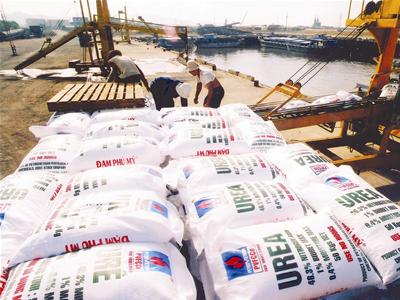
| Fertilisers free of export licence | |||
Enterprises will be free to export fertiliser without having to seek Government approval, said general secretary of the Viet Nam Fertiliser Association (VNFA) Nguyen Hac Thuy. Thuy said that the Ministry of Industry and Trade was expected to abolish export licences on fertiliser late this month or early October in the wake of a proposal from the VNFA. With the ending of export licensing, the domestic fertiliser market will become subject to fluctuations, Thuy said, adding that businesses would produce and trade fertiliser based on local demand, with the Government controlling import via its tax policy. Previously, the country had to apply the licensing on fertiliser exportation as domestic demand often outstripped supply, and the country regularly imported a large volume of fertiliser. However, Thuy said, in the light of recent changes, many local producers had increased their output and now meet half of domestic demand for nitrogenous fertiliser and 100 per cent of phosphate and NPK fertiliser. Besides, Viet Nam’s main fertiliser supplier is China, making transportation to Viet Nam easy, according to Thuy. "Based on these developments, the Government has deemed export licensing as no longer appropriate, realising it created difficulties for businesses trying to cope with rapid price fluctuations and market demand," Thuy said.
Last year, many domestic fertiliser producers and traders suffered big losses due to the slow issuing of export licences when the product price dropped from US$850 to USD270 per tonne. According to the VNFA, although the 2009-10 winter-spring crop has not yet begun, domestic producers and importers have stocked enough fertiliser for the season. Vietnamese farmers need between 7.5 million and 8 million tonnes of fertiliser a year. Current local production meets roughly half of this. The Ministry of Agriculture and Rural Development estimates that Viet Nam may not have to import fertiliser from 2020 when domestic output is expected to meet demand. | |||
| VietNamNet + Viet Nam News |
